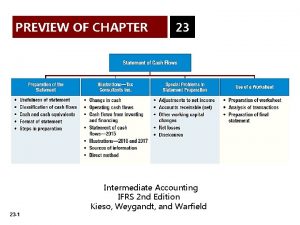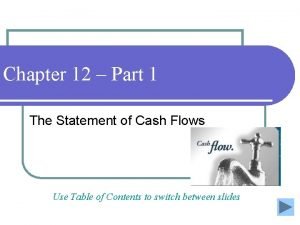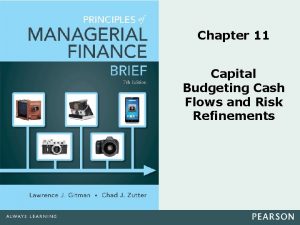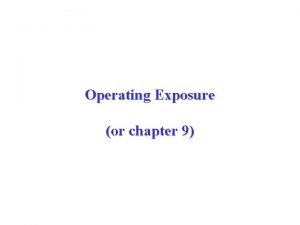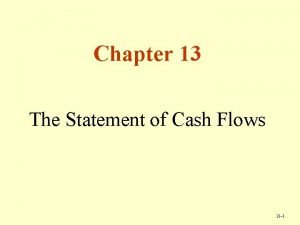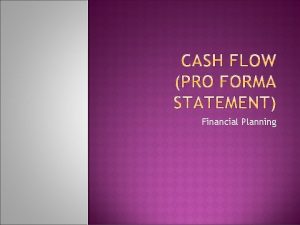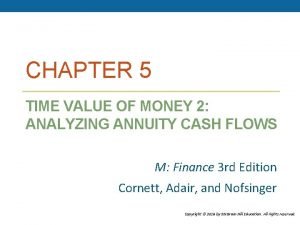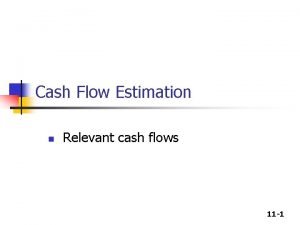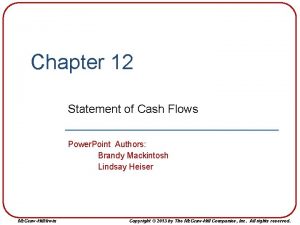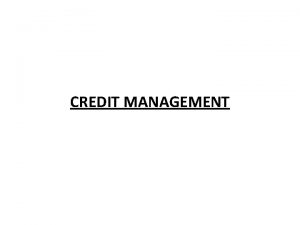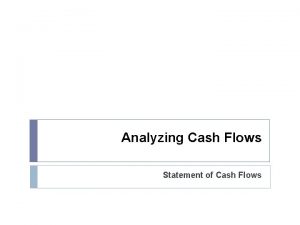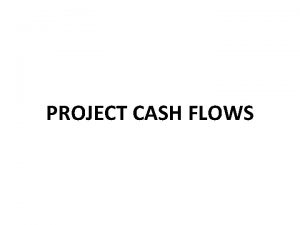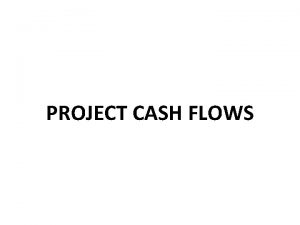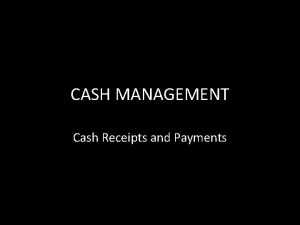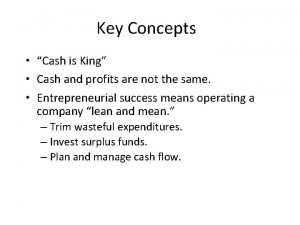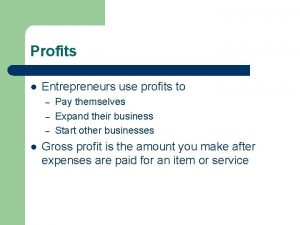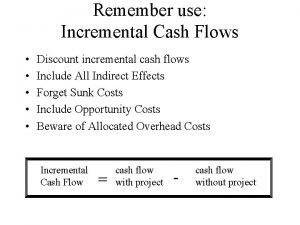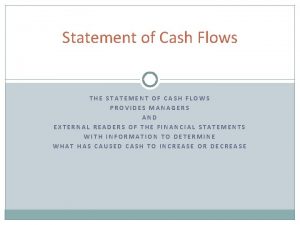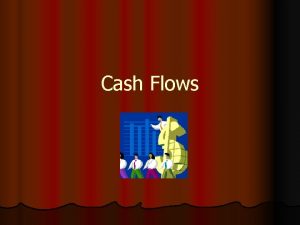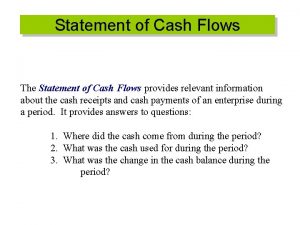MEASURING CASH FLOWS Measuring Cash Flows Profits in















- Slides: 15

MEASURING CASH FLOWS

Measuring Cash Flows • Profits in the financial statements are calculated on “accrual basis” rather than “cash basis” (see next slide for accrual basis accounting). • Thus, profits are not equal to cash.

Accrual Basis Accounting • Accrual basis is the principle of recording revenues when earned and expenses when incurred, rather than when cash is received or paid. – Thus, sales revenue recorded in the income statement includes both cash and credit sales. Similarly, inventory purchases may not be entirely paid for in cash as suppliers may extend credit for some of the purchases. • Treatment of long-term assets: Asset acquisitions (that will last more than one year, such as equipment) are not recorded as an expense but are written off every year as depreciation expense.

Sources and Uses of Cash Sources of Cash § Decrease in an Asset § Example: Selling inventories or collecting receivables provides cash § Increase in Liability or Equity § Example: Borrowing funds or selling stocks provides cash Uses of Cash § Increase in an Asset § Example: Investing in fixed assets or buying more inventories uses cash § Decrease in Liability or Equity § Example: Paying off a loan or buying back stock uses cash

How to Measure a Firm’s Cash Flows

Three Sources of Cash Flows • Cash flows from Operations (ex. Sales revenue, labor expenses) • Cash flows from Investments (ex. Purchase of new equipment) • Cash flows from Financing (ex. Borrowing funds, payment of dividends)

Three Sources of Cash Flows (cont. ) • If we know the cash flows from operations, investments, and financing, we can understand the firm’s cash flow position better, that is, how cash was generated and how it was used.

Income Statement Conversion: From Accrual to Cash Basis Cash Flow from Operations: Five Steps 1. Add back depreciation. 2. Subtract (add) any increase (decrease) in accounts receivable. 3. Subtract (add) any increase (decrease) in inventory. 4. Subtract (add) any increase (decrease) in other current assets. 5. Add (subtract) any increase (decrease) in accounts payable and other accrued expenses.

Figure 3 -5

Home Depot (cash flow from operations)

Cash Flow from Investing in Long-Term Assets • Long-term assets include fixed assets and other long-term assets. A firm may be engaged in acquisition and sale of such assets leading to cash flows. • Home Depot’s spent $1. 126 billion on fixed assets (as observed by the change in gross fixed assets) and $159 million on other assets.

Cash Flows from Financing the Business Cash Inflows Cash Outflows § Repayment of debt (as § Borrowings (as reflected by increase in shown by decrease in short-term and/or longshort-term and longterm debt) § Owner(s) invest in business (as reflected by an increase in stockholders’ equity) § Payment of dividend § Repurchase of stock

Financing the Business Illustrated: Home Depot

Table 3 -4

Tips for Statement of Cash Flows • Consider one section at a time. • You need only 2 items from the income statement: net income and depreciation expense. • Consider change for all items in the balance sheet, except: ignore accumulated depreciation and net fixed assets; ignore change in retained earnings.
 Production budget example
Production budget example Cash received from customers
Cash received from customers Common stock in cash flow statement
Common stock in cash flow statement Chapter 23 statement of cash flows
Chapter 23 statement of cash flows Statement of cash flows partial
Statement of cash flows partial Payback time formula
Payback time formula Juarez company acquired $1 200
Juarez company acquired $1 200 Chapter 11 capital budgeting cash flows solutions
Chapter 11 capital budgeting cash flows solutions Operating exposure
Operating exposure How to calculate incremental cash flows
How to calculate incremental cash flows The statement of cash flows classifies items as
The statement of cash flows classifies items as Cash flow pro
Cash flow pro Future value of multiple cash flows example
Future value of multiple cash flows example Relevant cash flows
Relevant cash flows Cash flow indirect method
Cash flow indirect method Granting credit to customers
Granting credit to customers



